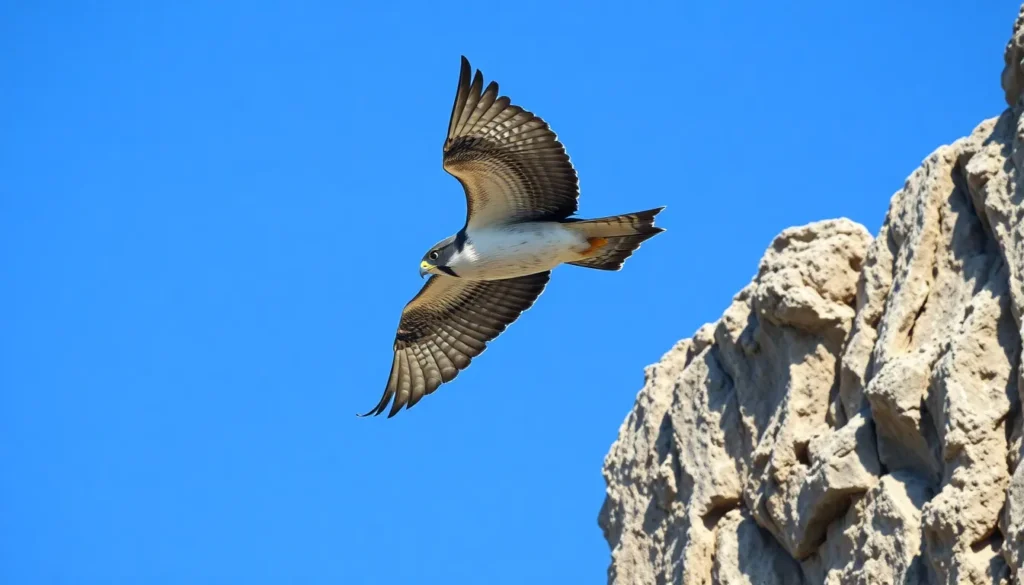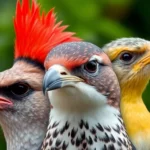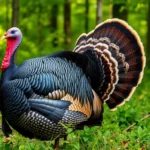When we think of nature’s most skilled hunters, falcons immediately soar to mind. These magnificent birds of prey have captivated humans for thousands of years with their incredible speed, precision, and aerial mastery. From the lightning-fast peregrine falcon that can dive at over 200 mph to the majestic gyrfalcon of the Arctic, these raptors represent the pinnacle of evolutionary perfection.
We’ve watched in awe as falcons demonstrate hunting techniques that seem almost supernatural. Their keen eyesight can spot prey from miles away, while their aerodynamic bodies cut through the air with unmatched efficiency. These remarkable characteristics haven’t just made them apex predators – they’ve also forged an ancient bond with humans through the art of falconry.
Whether you’re a bird enthusiast, wildlife photographer, or simply curious about these incredible creatures, understanding falcons opens our eyes to one of nature’s most extraordinary success stories. Let’s explore what makes these aerial acrobats truly special.
What Is a Falcon Bird?
Falcons represent a distinct group of raptors within the Falconidae family, comprising over 40 species of aerial predators found across every continent except Antarctica. These birds of prey distinguish themselves through specialized hunting adaptations that enable them to capture prey mid-flight with remarkable precision.
Physical Characteristics and Identification
Falcon identification relies on several distinctive anatomical features that set them apart from other raptors. Their streamlined bodies feature pointed wings that create an efficient aerodynamic profile for high-speed flight. Wing spans range from 20 inches in American kestrels to 51 inches in gyrfalcons.
Facial characteristics provide reliable identification markers. Falcons display prominent dark “tear marks” or “malar stripes” extending from their eyes down to their beaks. These markings reduce glare during hunting activities. Their eyes position forward on their heads, providing enhanced depth perception for tracking fast-moving prey.
Body proportions favor speed over soaring capabilities. Falcons maintain compact torsos with muscular chest areas that power their rapid wing beats. Their tails appear relatively short and tapered compared to hawks and eagles. Leg length varies by species, with longer legs in ground-hunting species like caracaras and shorter legs in aerial specialists like peregrines.
Beak structure demonstrates clear predatory adaptations. All falcon species possess hooked upper mandibles with distinctive “tomial teeth” – sharp projections that slice through prey vertebrae for quick kills. These dental ridges distinguish falcons from hawks, which lack this specialized feature.
Falcon vs. Hawk: Key Differences
Wing shape creates the most obvious visual distinction between falcons and hawks. Falcons display narrow, pointed wings that angle backward during flight, while hawks feature broader, rounded wings suited for soaring and maneuvering through dense vegetation.
Flight patterns reveal behavioral differences between these raptor groups. Falcons execute direct, powerful flight with rapid wing beats and occasional steep dives. Hawks employ thermal soaring and gliding techniques, conserving energy while scanning for ground-based prey.
Hunting strategies separate these birds into distinct ecological niches. Falcons specialize in aerial pursuit, capturing birds, bats, and flying insects through high-speed chases. Hawks primarily hunt from perches, targeting small mammals, reptiles, and ground-dwelling birds through surprise attacks.
Nesting behaviors demonstrate contrasting reproductive approaches. Falcons typically claim cliff faces, building ledges, or abandoned nests of other species rather than constructing their own structures. Hawks build substantial stick nests in tree forks or rocky outcrops, often reusing and expanding these structures across multiple breeding seasons.
Types of Falcon Birds
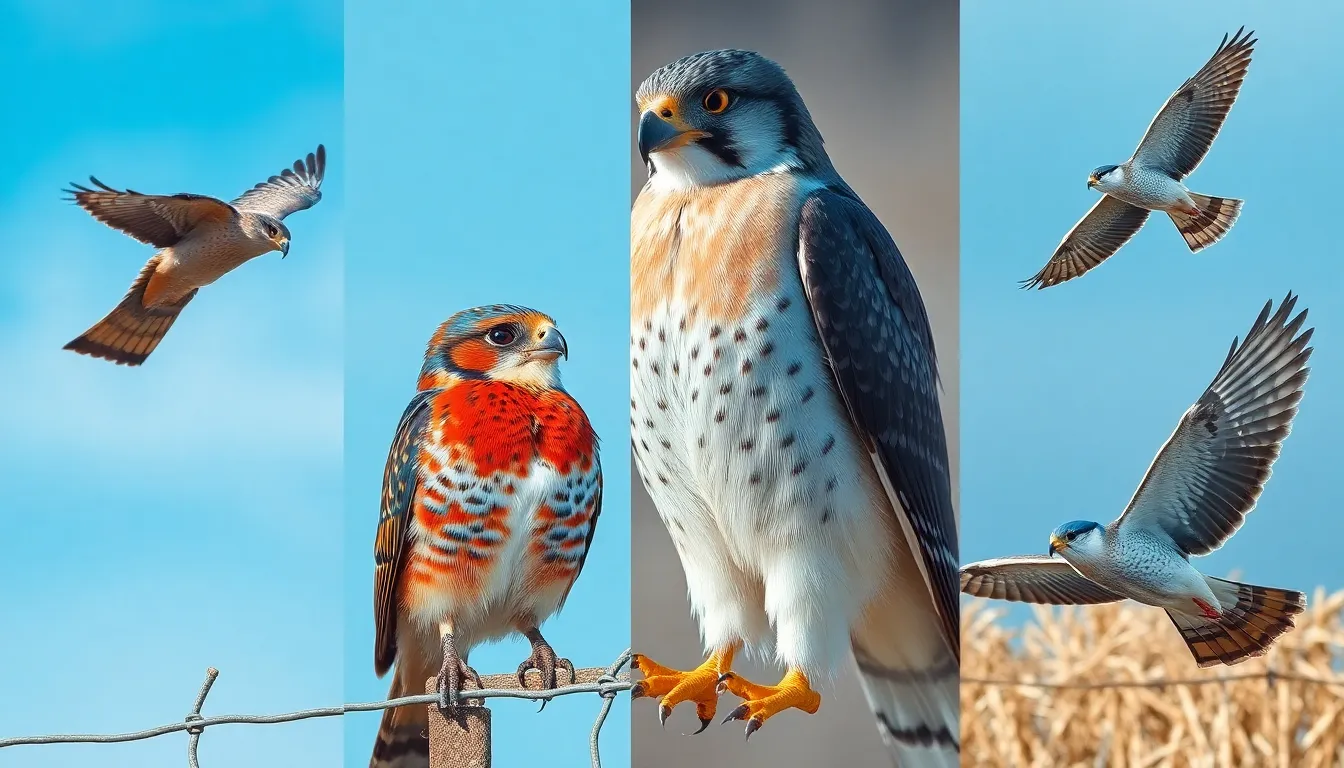
We explore four distinctive falcon species that showcase the remarkable diversity within the Falconidae family. Each species demonstrates unique adaptations and hunting strategies across different environments worldwide.
Peregrine Falcon
Peregrine falcons hold the distinction as the industry’s fastest birds during hunting dives, reaching speeds exceeding 240 mph when pursuing prey. These cosmopolitan raptors inhabit every continent except Antarctica and adapt to diverse environments from urban skyscrapers to coastal cliffs. Adult peregrines measure 14-19 inches in length with distinctive slate blue backs and barred underparts. Their hunting technique involves spectacular high altitude stoops where they dive at tremendous speeds to strike prey mid flight. We observe these falcons primarily targeting medium sized birds like pigeons, ducks, and shorebirds. Recovery efforts have successfully restored peregrine populations after DDT nearly caused their extinction in the mid 20th century.
American Kestrel
American kestrels represent North America’s smallest and most colorful falcon species, measuring just 8-12 inches in length with distinctive rusty red and blue gray plumage patterns. Males display vibrant rufous backs with black barring while females show more subdued brown tones throughout their feathers. These compact hunters prefer open grasslands, agricultural areas, and suburban environments where they hunt from prominent perches or hover while scanning for prey. Kestrels primarily consume insects, small mammals, and occasionally small birds, making them beneficial pest controllers in farming regions. We recognize their characteristic hunting behavior of head pumping and tail fanning when excited or focused on potential prey below.
Gyrfalcon
Gyrfalcons claim the title as the largest falcon species globally, with females reaching up to 26 inches in length and weighing over 4 pounds in some cases. These Arctic specialists inhabit the northern regions of North America, Europe, and Asia where they’ve adapted to extreme cold conditions. Color variations range from nearly pure white morphs to dark gray forms, with intermediate phases displaying mixed plumage patterns. Their powerful build enables them to take substantial prey including ptarmigan, waterfowl, and Arctic ground squirrels throughout harsh winter conditions. We find these impressive hunters maintaining year round territories in the Arctic tundra where few other raptors can survive the extreme climate.
Merlin Falcon
Merlin falcons showcase compact power in a small 9-13 inch frame, earning recognition as fierce hunters even though their diminutive size compared to other falcon species. These ever-changing predators display sexual dimorphism with males showing blue gray upperparts while females present browner coloration overall. Prairie, taiga, and coastal subspecies each demonstrate distinct habitat preferences and subtle plumage variations across their North American and Eurasian ranges. Merlins specialize in pursuing small songbirds through acrobatic flight maneuvers, often chasing prey through dense vegetation and around obstacles. We observe these determined hunters employing surprise attacks and relentless pursuit tactics that frequently succeed against faster flying prey species.
Falcon Bird Habitat and Distribution
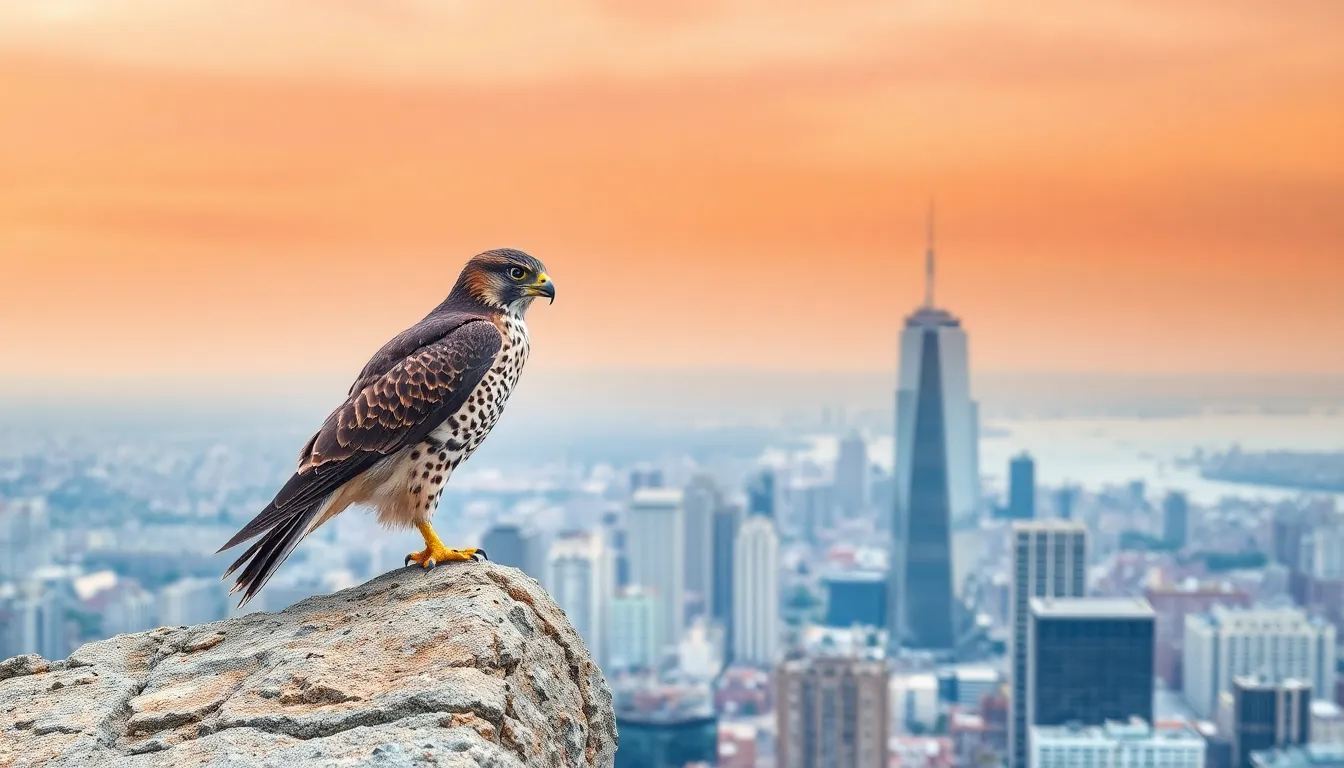
Falcon birds demonstrate remarkable adaptability across diverse ecosystems worldwide. These skilled raptors occupy environments ranging from urban skyscrapers to remote wilderness areas.
Natural Habitats
Cliff faces and rocky outcrops serve as traditional nesting sites for most falcon species. Peregrine falcons particularly favor these elevated positions which provide excellent vantage points for hunting and protection from ground predators. Urban environments now support thriving falcon populations as tall buildings mimic their natural cliff habitats.
Open grasslands and prairies attract species like American kestrels that hunt small mammals and insects. These areas offer abundant prey and scattered trees or utility poles for perching. Agricultural regions provide similar hunting opportunities with field edges supporting diverse small animal populations.
Arctic tundra environments host specialized species including gyrfalcons. These harsh northern landscapes require exceptional cold weather adaptations and support populations of ptarmigan and other Arctic birds that form the primary prey base. Coastal areas and wetlands provide hunting grounds for falcons targeting shorebirds and waterfowl.
Forest edges represent crucial habitat zones where falcons can access both woodland prey and open hunting spaces. Merlins commonly use these transition areas to pursue songbirds while maintaining access to tree cover for nesting and roosting.
Global Distribution Patterns
| Region | Primary Species | Habitat Preference |
|---|---|---|
| North America | Peregrine Falcon, American Kestrel, Merlin | Urban areas, grasslands, coastal regions |
| Europe | Peregrine Falcon, Eurasian Kestrel | Cities, moorlands, agricultural areas |
| Asia | Saker Falcon, Laggar Falcon | Steppes, semi-deserts, mountain regions |
| Africa | Lanner Falcon, Red-necked Falcon | Savannas, semi-arid regions, cliff areas |
| Australia | Brown Falcon, Nankeen Kestrel | Woodlands, scrublands, urban environments |
| Arctic Regions | Gyrfalcon | Tundra, rocky outcrops, northern coastlines |
Continental distributions reflect evolutionary adaptations to exact climate conditions and prey availability. North American falcons span from Arctic Canada to tropical Mexico with species-exact ranges determined by temperature tolerance and food sources. European populations concentrate in areas with suitable cliff formations and abundant bird populations.
Asian falcon species occupy vast territories across diverse landscapes including Himalayan mountains and Central Asian steppes. African distributions follow seasonal migration patterns with some species moving between breeding and wintering grounds. Australian falcons have adapted to unique continental conditions with several endemic species found nowhere else globally.
Migration corridors connect breeding and wintering territories for many falcon species. These pathways often follow mountain ranges, coastlines, and river valleys that provide thermal currents and concentrated prey populations during seasonal movements.
Hunting Behavior and Diet
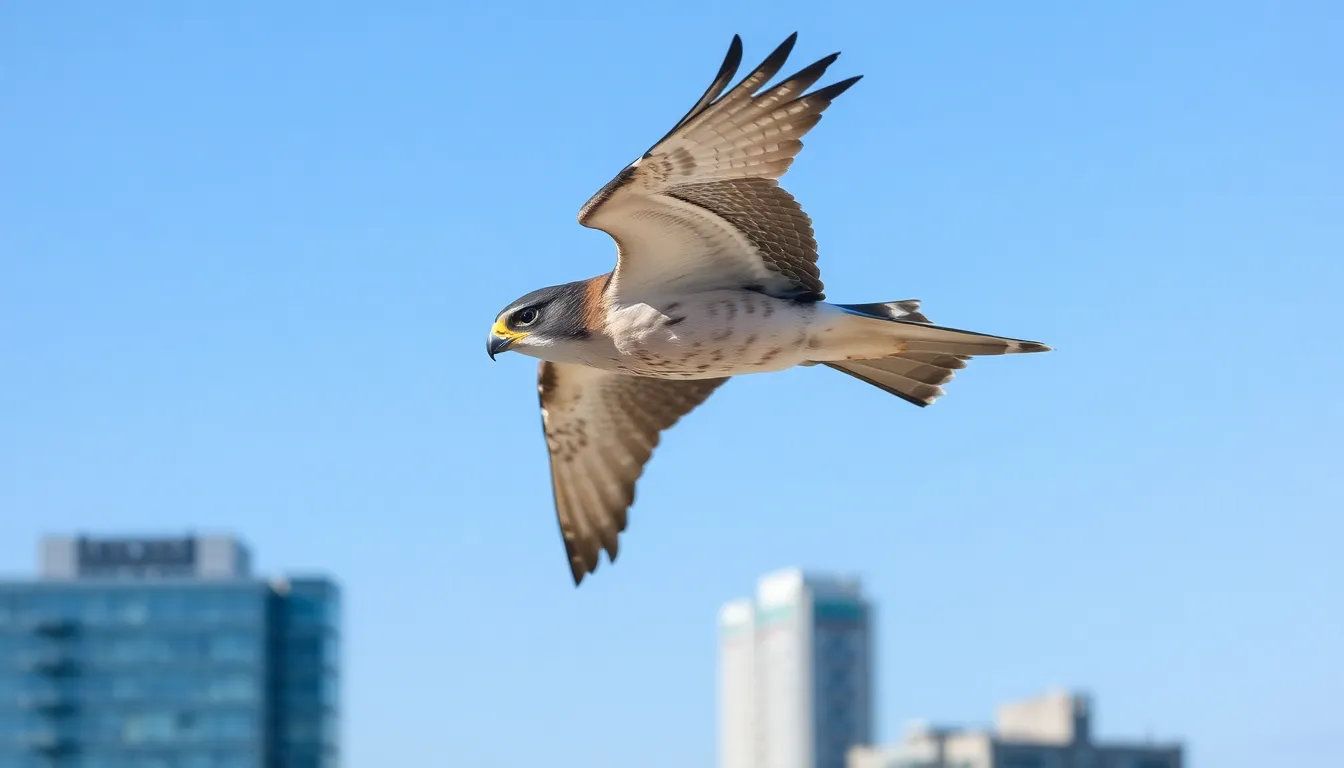
Falcons employ sophisticated hunting strategies that have evolved over millions of years. These aerial predators demonstrate remarkable precision and efficiency when capturing prey across diverse environments.
Hunting Techniques and Speed
Falcons execute three primary hunting methods that showcase their aerial supremacy. The most spectacular technique involves high-speed stooping dives where peregrine falcons reach velocities exceeding 240 mph during their hunting descents. American kestrels hover in place using rapid wingbeats to scan grasslands for movement below. Merlins pursue prey through horizontal chases that can span several miles across open terrain.
These raptors coordinate their attacks using exceptional visual acuity that’s eight times sharper than human eyesight. Falcon eyes detect movement from distances up to 2 miles away while maintaining focus on multiple targets simultaneously. The nictitating membrane protects their eyes during high-speed dives while specialized breathing adaptations prevent blackouts at extreme velocities.
Ground hunting represents another falcon specialty where species like gyrfalcons walk across tundra landscapes to capture small mammals. Prairie falcons combine aerial and terrestrial techniques by swooping low over desert floors to surprise ground squirrels and lizards. Urban peregrine falcons adapt their strategies by using building ledges as launching platforms for surprise attacks on pigeons.
Prey Selection and Feeding Habits
Falcon dietary preferences vary significantly across species and geographic regions. Small falcons like American kestrels consume insects, rodents, and reptiles that comprise 60% of their daily intake. Medium-sized species including merlins specialize in catching songbirds such as sparrows, finches, and warblers during migration periods.
| Falcon Species | Primary Prey | Secondary Prey | Daily Consumption |
|---|---|---|---|
| Peregrine Falcon | Pigeons, doves | Ducks, shorebirds | 2-3 birds |
| Gyrfalcon | Ptarmigan, grouse | Arctic hares, lemmings | 1-2 large prey |
| American Kestrel | Insects, mice | Small birds, lizards | 8-12 small prey |
| Merlin | Songbirds | Dragonflies, bats | 3-5 small birds |
Large falcon species demonstrate opportunistic feeding behaviors that reflect seasonal prey availability. Gyrfalcons switch between ptarmigan hunting during winter months and lemming consumption throughout summer breeding seasons. Peregrine falcons adapt their diets to urban environments by targeting introduced species like European starlings and rock doves.
Feeding patterns follow distinct seasonal cycles that correspond with prey migration and reproduction schedules. Falcons consume more protein during breeding seasons to support egg production and chick development. Winter diets often include higher fat content from waterfowl and seabirds to maintain body temperature in harsh climates.
Falcon Bird Breeding and Reproduction

Falcon reproduction strategies demonstrate remarkable adaptability across diverse environments and species. These sophisticated breeding behaviors ensure successful continuation of falcon lineages through carefully coordinated mating rituals and protective parenting techniques.
Nesting Habits
Falcons select nesting locations based on accessibility to prey and protection from predators. Cliff faces provide the most common nesting sites, with peregrine falcons preferring ledges 50 to 200 feet above ground level. Urban environments offer alternative nesting opportunities on tall buildings, bridges, and communication towers.
Ground nesting occurs among prairie falcons and gyrfalcons in tundra regions. These species create simple scrapes in gravel or sandy soil, often reusing the same sites across multiple breeding seasons. American kestrels use tree cavities, abandoned woodpecker holes, and artificial nest boxes installed by wildlife managers.
Nest construction remains minimal across all falcon species. Most falcons arrange small amounts of debris, feathers, or vegetation in their chosen locations. The female typically performs nest preparation activities while the male provides food and territorial defense.
Territory size varies dramatically among species and habitat quality. Peregrine falcons maintain territories spanning 1 to 6 square miles, while American kestrels defend smaller areas of 100 to 250 acres. Gyrfalcons establish the largest territories, covering up to 10 square miles in Arctic regions.
Mating Rituals and Offspring Care
Courtship displays begin 4 to 6 weeks before egg laying in most falcon species. Males perform aerial acrobatics including steep dives, figure-eight patterns, and food presentations to attract mates. These displays demonstrate hunting prowess and physical fitness to potential partners.
Pair bonding typically lasts for single breeding seasons, though some species maintain partnerships for multiple years. Peregrine falcons show the highest mate fidelity rates, with established pairs returning to the same nesting territories annually. Courtship feeding strengthens pair bonds as males provide prey items to females throughout the pre-laying period.
Egg laying occurs between March and June depending on latitude and species. Falcon clutches contain 2 to 6 eggs, with American kestrels producing the largest clutches and gyrfalcons the smallest. Females incubate eggs for 28 to 35 days while males provide food and territory defense.
| Species | Clutch Size | Incubation Period | Fledgling Period |
|---|---|---|---|
| Peregrine Falcon | 3-4 eggs | 32-34 days | 35-42 days |
| American Kestrel | 4-6 eggs | 28-31 days | 28-31 days |
| Gyrfalcon | 2-4 eggs | 34-36 days | 46-53 days |
| Merlin | 3-5 eggs | 28-32 days | 25-30 days |
Parental care extends beyond the fledgling period for most falcon species. Both parents provide food to young falcons for 2 to 8 weeks after they leave the nest. Gyrfalcons demonstrate the longest dependency period, with juveniles remaining near parents for up to 4 months while learning essential hunting techniques.
Breeding success correlates directly with prey availability and nesting site quality. Urban peregrine falcon populations achieve higher reproductive rates due to abundant pigeon populations and reduced competition. Arctic species experience cyclical breeding success tied to lemming and ptarmigan population fluctuations occurring every 3 to 4 years.
Conservation Status and Threats

Falcon populations face varying conservation challenges across different species and regions. These magnificent raptors encounter threats ranging from habitat loss to environmental contamination that affect their long-term survival prospects.
Population Trends
Population dynamics among falcon species reveal diverse conservation trajectories across the globe. Peregrine falcon numbers demonstrate remarkable recovery patterns following the DDT crisis of the mid-20th century, with North American populations increasing from fewer than 400 breeding pairs in the 1970s to over 3,000 pairs today.
American kestrel populations show concerning decline trends across much of their range. Breeding Bird Survey data indicates a 66% population decrease since 1966, with habitat loss and pesticide exposure contributing to this downward trajectory. Agricultural intensification removes the grassland ecosystems these small falcons depend on for hunting insects and small mammals.
Gyrfalcon populations remain relatively stable in Arctic regions but face mounting pressure from climate change. Research indicates that warming temperatures affect prey availability and nesting success rates in traditional tundra habitats. Merlin falcon numbers show mixed trends, with urban populations thriving while rural populations experience moderate declines due to habitat fragmentation.
Human Impact and Protection Efforts
Human activities create both challenges and opportunities for falcon conservation worldwide. Urban development destroys natural nesting sites on cliff faces while simultaneously providing alternative locations on tall buildings and bridges. Cities offer abundant prey in the form of pigeons and starlings, supporting growing urban falcon populations.
Agricultural practices impact falcon species through pesticide contamination and habitat modification. Modern farming methods reduce insect populations that smaller falcon species rely on for food. Organochlorine pesticides continue to affect reproductive success in some regions even though widespread bans in developed countries.
Conservation programs demonstrate measurable success through targeted protection efforts. Peregrine falcon recovery programs include captive breeding initiatives that released over 6,000 birds into the wild between 1974 and 1997. Nest box programs provide artificial nesting sites for American kestrels, with monitoring data showing increased breeding success rates in participating areas.
International cooperation enhances falcon protection across migratory corridors. The Migratory Bird Treaty Act protects all falcon species in North America, while European legislation provides similar safeguards for Old Industry species. Research and monitoring programs track population trends and identify emerging threats, enabling adaptive management strategies that address exact conservation challenges facing different falcon species.
Falcons in Human Culture

Throughout recorded history, falcons have maintained an extraordinary connection with human civilization that spans thousands of years. These magnificent raptors transcend their role as apex predators to become deeply embedded in our cultural traditions, spiritual beliefs, and recreational practices.
Falconry and Traditional Hunting
Falconry represents one of humanity’s oldest partnerships with wild birds, dating back over 4,000 years to ancient civilizations in Central Asia and the Middle East. Archaeological evidence from Kazakhstan shows humans practicing falconry as early as 2,000 BCE, making it among the industry’s most enduring hunting traditions.
Medieval Europe elevated falconry to an art form that defined social hierarchy and nobility. Peregrine falcons served exclusively as birds for royalty, while gyrfalcons commanded prices equivalent to entire estates. The practice required extensive knowledge of falcon behavior, training techniques, and prey patterns that masters passed down through generations.
Arab falconers developed sophisticated methods for training saker falcons and peregrine falcons in desert environments. These techniques spread along ancient trade routes, reaching Japan where samurai warriors adopted falconry as both recreation and military training. Japanese falconers created unique equipment designs and training protocols that remain influential in modern falconry practices.
Contemporary falconry maintains strict licensing requirements and conservation principles across 60+ countries worldwide. Modern falconers contribute significantly to falcon research, breeding programs, and population monitoring efforts. The practice combines traditional knowledge with scientific understanding to ensure sustainable relationships between humans and wild falcon populations.
Symbolism and Cultural Significance
Ancient Egyptian mythology featured the falcon-headed god Horus, representing divine kingship, protection, and the sky itself. Egyptian pharaohs wore falcon symbols as crowns and incorporated falcon imagery into royal sarcophagi and temple decorations. This association established falcons as symbols of power and divine authority across Mediterranean civilizations.
Nordic cultures viewed falcons as messengers of Odin, the supreme god of war and wisdom. Viking warriors carried falcon feathers into battle and decorated their shields with falcon motifs. Icelandic sagas describe gyrfalcons as gifts worthy of kings, reflecting their sacred status in Norse society.
Native American tribes developed rich spiritual connections with falcons across diverse ecosystems. Plains tribes considered prairie falcons as symbols of speed and hunting prowess, while Pacific Northwest cultures associated peregrine falcons with transformation and renewal. These beliefs influenced ceremonial practices, storytelling traditions, and artistic expressions that continue today.
Modern heraldry features falcon symbols in over 200 national, regional, and family coats of arms worldwide. The United Arab Emirates displays a golden falcon on its national emblem, while Iceland incorporates a gyrfalcon on its coat of arms. Athletic teams across 15+ countries adopt falcon mascots to represent speed, precision, and competitive excellence.
Corporate branding frequently uses falcon imagery to convey concepts of efficiency, precision, and technological advancement. Major airlines, automotive manufacturers, and technology companies incorporate falcon symbols in their logos and marketing materials. This modern symbolism builds upon centuries of cultural associations between falcons and superior performance.
Conclusion
We’ve explored the intriguing area of falcons and discovered why these remarkable birds continue to captivate us. From their lightning-fast hunting prowess to their incredible adaptability across diverse environments falcons represent some of nature’s most successful predators.
Our journey through falcon biology behavior and conservation reveals both challenges and triumphs. While some species face declining populations others have made remarkable recoveries through dedicated conservation efforts.
The enduring bond between falcons and human culture speaks to something deeper than mere admiration. These magnificent raptors embody the wild freedom and precision we aspire to while reminding us of our responsibility to protect the natural industry they inhabit.
Frequently Asked Questions
What makes falcons different from other birds of prey?
Falcons are distinguished by their streamlined bodies, pointed wings, and unique facial markings that aid in hunting. They belong to the Falconidae family and have different wing shapes, flight patterns, and hunting strategies compared to hawks. Falcons typically use high-speed dives and aerial pursuits, while their pointed wings allow for exceptional maneuverability during flight.
How fast can a peregrine falcon dive?
Peregrine falcons can reach incredible speeds of over 240 mph during their hunting dives, known as stooping. This makes them one of the fastest animals on Earth. Their streamlined body shape and specialized hunting technique allow them to achieve these remarkable speeds when diving to catch prey.
Where do falcons typically build their nests?
Falcons primarily nest on cliff faces and rocky outcrops, which provide protection from predators and easy access to hunting grounds. However, they’ve also adapted to urban environments, nesting on tall buildings and bridges. Some species like gyrfalcons nest on the ground in Arctic tundra regions, showing their remarkable adaptability.
What do falcons eat?
Falcon diets vary by species size. Smaller falcons like American kestrels primarily hunt insects, small mammals, and rodents. Larger species such as peregrine falcons and gyrfalcons prey on birds, including pigeons, ducks, and other waterfowl. Their diet adapts seasonally based on prey availability and migration patterns.
Are falcon populations endangered?
Falcon conservation status varies by species. Peregrine falcons have made a remarkable recovery since the mid-20th century thanks to conservation efforts. However, American kestrel populations are declining due to habitat loss and pesticide exposure. Gyrfalcons remain stable but face climate change threats, while merlin populations show mixed trends across regions.
How do falcons hunt their prey?
Falcons employ three main hunting strategies: high-speed stooping dives, hovering techniques, and horizontal chases. Their exceptional eyesight allows them to detect movement from great distances. They use their speed, precision, and aerial agility to coordinate effective attacks, making them some of nature’s most skilled hunters.
What is falconry and how long has it existed?
Falconry is the practice of hunting with trained falcons and other birds of prey. This ancient art dates back over 4,000 years and has played significant roles in various cultures, including medieval Europe, Arab traditions, and Japanese customs. It represents one of humanity’s oldest partnerships with wild animals.
How many falcon species exist worldwide?
There are over 40 falcon species within the Falconidae family, found on every continent except Antarctica. This diverse group includes species ranging from the tiny American kestrel to the large gyrfalcon, each adapted to specific environments and hunting strategies across different global ecosystems.
Where can falcons be found globally?
Falcons have adapted to diverse environments worldwide, from urban areas to remote wilderness. They inhabit grasslands, Arctic tundra, coastal regions, and city centers. Their global distribution reflects evolutionary adaptations to various climates and prey availability, with migration corridors connecting breeding and wintering territories.
What threats do falcon populations face today?
Modern falcon populations face threats including habitat loss from urban development, pesticide exposure, and climate change. While some species have recovered through conservation programs like captive breeding and nest box initiatives, ongoing challenges require continued international cooperation and protection efforts for migratory species.

